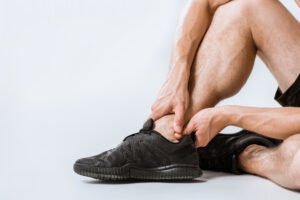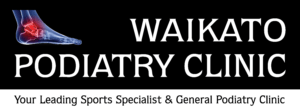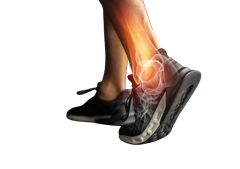Posterior Tibial Tendon Dysfunction
 What is it Posterior Tibial Tendon Dysfunction?
What is it Posterior Tibial Tendon Dysfunction?
Posterior tibial tendon dysfunction (PTTD) is where the large tendon joining the bones in the arch of your foot to a large muscle in your calf becomes stretched and loses its strength and ability to function properly.This all occurs with pain and often swelling in the area, particularly when used a lot. Failure of this tendon to work properly over time can lead to a progressive flat foot (quite common) and long term damage to surrounding parts of the foot and ankle.
How do I know if I have Posterior Tibial Tendon Dysfunction?
It may be difficult to diagnose the pain without professional assistance, however, if caught early, the progression can be limited. Signs and symptoms could be:
- Pain around the inside of your ankle or arches particularly after of during exercise
- Your ankle may roll inwards
- The foot may change shape, and drift inwards You may get pain when you stand on your tiptoes
Pain Reduction
Pain reduction for PTTD can be achieved by wearing prescribed orthotic supports in all your shoes. Anti-inflammatory medication can help, but should not be used as a long-term treatment. Your Podiatrist can help advise on this. Strengthening exercises will help support the foot and reduce the pain from your PTTD.
What might be the cause?
Some of the most common causes are:
- Excessive twisting and collapsing of the arch during walking
- Poor footwear choice for the activity you are doing
- Trauma – history of going over on your ankle, or damage to the ligaments in your arch
- Age related degeneration of the tissues in the area and poor rate of repair
- Steroid use
- Osteoarthritis and foot collapse
- Hereditary
- Neurological changes in your foot
How can Posterior Tibial Tendon Dysfunction be treated?
Around 85% of the time, non-surgical treatment can give suitable relief.
- Customised orthotic supports in combination with structured strengthening exercises and good footwear are essential for a good outcome in this condition.
- It is also important to treat any inflammatory symptoms. Your Podiatrist can help with these options.
- It’s important to be wearing the right footwear and orthotic device that work together to support the inside arch of the foot and heel.
The goal of treatment is to reduce pain and increase function, as well as minimizing further deterioration of this progressive condition. Surgery can be required in advanced cases; your Podiatrist can determine if a surgical referral is required.
Long Term Solution for Posterior Tibial Tendon Dysfunction
 As with most conditions getting the correct diagnosis in the first place is so important. The sooner you get a correct diagnosis and treatment starts, the sooner you will be pain free.
As with most conditions getting the correct diagnosis in the first place is so important. The sooner you get a correct diagnosis and treatment starts, the sooner you will be pain free.
If strapping the ankle is successful in removing the pain from your PTTD, then the same effect can be replicated by some type of medical insole and appropriate footwear.
The type of insole used will be dependant on a number of factors like what sort of shoes you wear, sports involvement, length and duration of the problem, as well as previous treatments. So insole choice is best discussed with your podiatrist. Over the counter insoles can help some people. But bear in mind you may not have over the counter feet.
Stretching and a combination of some of the other pain reduction strategies discussed are recommended in targeting this condition.
Still in Pain?
Are you are feeling like you have tried everything but are still in pain?
Do you feel like you have seen every health practitioner you can about your PTTD?
We have a track record of diagnosing and successfully treating cases that have previously proven difficult to resolve and we’d love to help you get back on your feet doing what you love.


 What is it Posterior Tibial Tendon Dysfunction?
What is it Posterior Tibial Tendon Dysfunction?